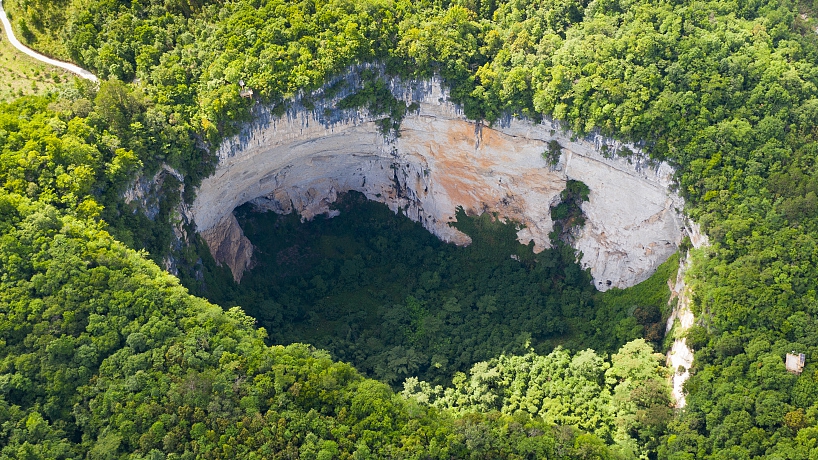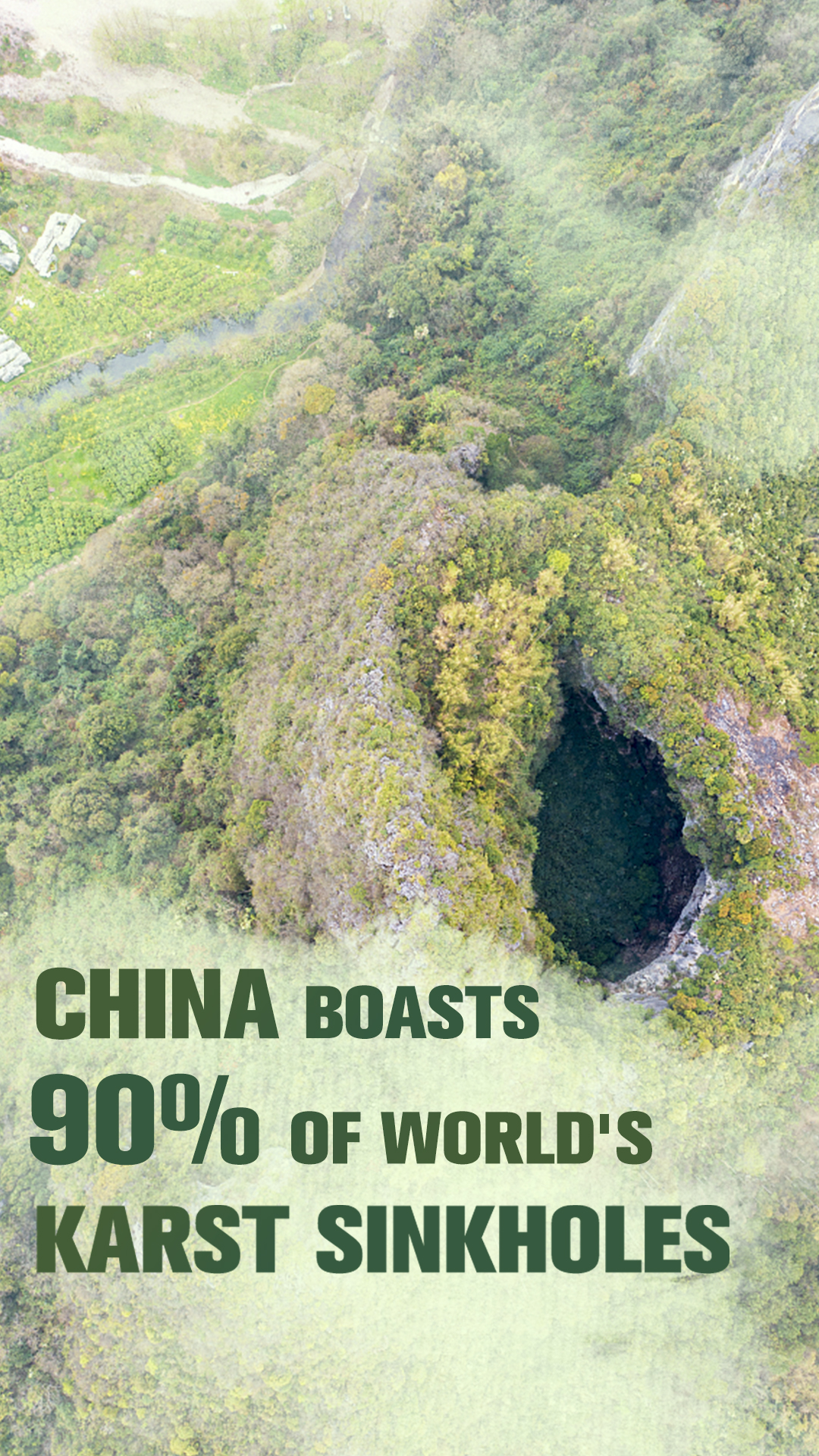
A sinkhole in Leye County, south China's Guangxi Zhuang Autonomous Region. /CFP
A sinkhole in Leye County, south China's Guangxi Zhuang Autonomous Region. /CFP
A cave exploration team recently discovered a giant karst sinkhole in Leye County, south China's Guangxi Zhuang Autonomous Region.
The new giant sinkhole, which has a deepest depth of 192 meters, is the 30th discovered in Leye.
By the end of 2021, a total of 31 clusters of over 270 giant karst sinkholes had been discovered in China, accounting for nearly 90 percent of the total global number.
Giant sinkholes, also known as Tiankeng (heavenly pit) in Chinese, are dolines, or giant pits, with special geological features found in karst regions formed by repeated cave-ins.
The sinkholes found in China are mainly concentrated in Guangxi, Guizhou, Chongqing, Yunnan, Sichuan, Hunan and Shaanxi, and the largest cluster of sinkholes is in Leye County.
"The deepest sinkhole in China is more than 500 meters, as we have explored to the depth of 500 meters or even deeper. The research on the structure of each stratum can provide technical support for determining the local geological evolution," said Dong Ying, chief expert of the paleontological fossils and geological remains survey project under China Geological Survey.
00:36

As sinkholes are a precious geological heritage, the research on them is of great significance to the study of the changes in geology, biology and vegetation.
"The study of sinkholes, including the determination of geological time, research on strata, and analyses of the elements involved such as water and other material composition, can help us determine their era of formation, and the climate conditions, temperature and environments in which the sinkholes took shape," said Dong.
Due to the absence of external disturbance, a unique microclimate, habitat and ecosystem can be formed in a sinkhole, thus breeding rich and unique biological resources, the expert said.
"It is an independent and relatively closed system, so the ecological environment and species inside are somewhat different from those outside. And the underground river connected to the sinkhole can give it a good ecological nourishment. Experts in cave plants and animals have made many new discoveries in recent years, as they have found some animals which can't be found on land in our country," she said.

